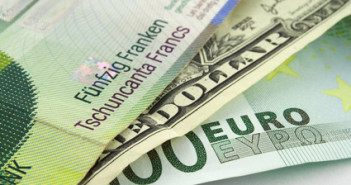With global financial markets trading in consolidative fashion this morning, the big news from the overnight session was the Reserve Bank of Australia’s monetary policy decision, where the central bank decided to leave policy unchanged with the cash rate at 2.0%, striking a slightly more hawkish tone than has been telegraphed in the past. Citing that the “prospects for an improvement in economic conditions had firmed a littleâ€, the bank judged that keeping policy unchanged at this juncture was the preferred course of action. The RBA did note the inflation outlook provided scope to ease policy further from current levels if warranted, though stopped short at talking down the Australian dollar directly by referencing that the Aussie had been adjusting to the significant declines in commodity prices. The AUDUSD paired popped higher on the decision to keep policy unchanged, yet the pair has started to ebb lower as the earlier gains fade.
With the highly anticipated December meeting of the Federal Reserve approaching, it’s likely the RBA wanted to keep some dry power in the event of additional Fed delays which spark a sell-off in the greenback, not wanting to get too close to its lower bound of interest rate policy to give the central bank room to maneuver if the Fed doesn’t go ahead with their first interest rate increase in December. The RBA is cognizant the economy still needs to rotate away from the heavy reliance on commodities, and is hoping the lower value of the Australian dollar will spur exports and drive economic activity.
If the case studies of Canada and Japan are any indication of how a weaker currency affects the trade balance position of an economy, the associated up-tick in exports after substantial depreciations of the domestic currencies has been lackluster at best, and in the case of Canada, the outgoing capital flows as investors search for better returns is worrisome. So even though the RBA is on the sidelines until the highly anticipated FOMC meeting in December, it may be too soon to suggest the easing cycle from the RBA has concluded, as a dampened domestic currency may be insufficient to spur the required demand in the sluggish international climate. The backdrop for developed central banks is beginning to emulate the children’s book “The Complete Version of Ye Three Blind Mice†with the investment community hoping a tonic is discovered that will allow the central banks to regrow their tails and recover their eyesight.
Though the economic docket is fairly light today for the North American session, both the US and Canada will be releasing trade balance numbers for the month of September tomorrow, with the implications for both data sets running high. In Canada, all eyes will be focused on the non-energy export data, which has yet to make any firm headway despite Bank of Canada Governor Poloz referencing there are green-shoots emerging in that area as the manufacturing and agriculture sector take advantage of the lower Canadian dollar. We remain less sanguine the rebuilding of the non-energy export sector will materialize at a speed fast enough to outweigh the downturn in the oil and gas sector in the short-term, with persistent trade balance deficits reflecting Canada’s deteriorating terms of trade.
For the US, a narrower than expected trade deficit for September would likely facilitate investors attaching a greater likelihood to interest rate liftoff by December, as a smaller deficit would upgrade the second estimate of third quarter GDP, and ease the Fed’s concern a stronger USD is hampering the country’s export position. A narrower than expected trade balance deficit combined with a strong NFP number towards the end of the week will bolster the Fed’s position that taking a swig of tonic in December is warranted, though with most other developed central banks well entrenched in monetary policy easing mode, will the tonic bring about the happily-ever-after-ending inspired by the aforementioned children’s book.
Further reading:
Elliott Wave Analysis: GBPUSD and NZDUSD
EUR/USD sliding ahead of Draghi, watch NZD



